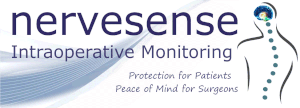SPINAL CORD MONITORING
Spinal cord monitoring is used during some types of surgery, including scoliosis correction.
Also known as Intraoperative Monitoring or IOM, it involves watching for possible damage to the spinal cord during surgery.
During the operation the tiny electrical signals that travel along the spinal cord are routinely monitored by a trained Clinical Technologist or Healthcare Scientist.
Electrodes are attached to the skin of the patient with wires linked to a computer. The computer can detect changes in the nervous system which may point to a problem. The Technologist watches the computer for these changes. The computer also may be used to trigger a response in the patient’s nervous system. This also can warn of possible damage that may be occurring.
The Technologist will alert the surgical team if there are any problems. Some problems are related to the anaesthesia and others stem from changes in tissue temperature or stress to the tissue.
What can be done if the doctor finds a problem?
When problems are seen on the computer, the surgery can be modified. The surgeon or anesthestist can take actions such as:
- Reducing the tension placed on the spine
- Adjusting or removing clamps or other equipment
- Inserting grafts or other equipment
- Increasing blood pressure to improve blood flow
- Ending the surgery sooner than usual
- Checking the patient’s responses with a “wake-up” test
These actions may help to prevent serious damage related to surgery, such as paralysis. Talk with your doctor to learn more about how problems during surgery are addressed.
Click here for a printable leaflet







